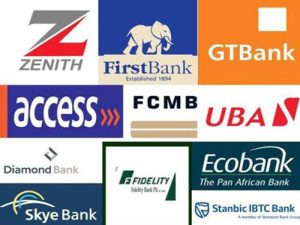Banks’ total assets rise to N63trn in 9 months

The total assets of the deposit money banks in Nigeria rose Year-on-Year (Y-o-Y) to N63.2 trillion in the first nine months of this year, up 19.04 percent from N53.1 trillion in the corresponding period of 2021.
The leading banks contributing to this rise include Zenith Bank Plc, Access Bank, United Bank for Africa (UBA) Plc, GTBank Plc and First Bank.
Others are Fidelity Bank Plc, Unity Bank Plc and Union Bank of Nigeria (UBN) Plc, Jaiz Bank Plc, Sterling Bank Plc, Stanbic IBTC Holdings Plc and Wema Bank Plc.“Vanguard findings from the banks’ financial reports that the tier-1 banks emerged the leaders in terms of the asset size.
Access Bank emerged the biggest bank in asset size, as its total assets for the period stood at N13.45 trillion, followed by Zenith Bank with N11.34 trillion, First Bank ranked third with N9.85 trillion, while UBA and GTBank placed fourth and fifth with N9.32 trillion and N5.81 trillion respectively.
Also Access Bank assets growth rate came tops with 29.9 percent growth over 2021 figure of N10.37 trillion, followed by Zenith Bank with 29.6 per cent growth.
Jaiz Bank was the next as its assets grew by 27 percent, Wema Bank recorded a 24.1 percent while Fidelity Bank placed fifth with 19.5 percent increase.
Meanwhile, S&P Global Ratings, a global credit rating agency, had warned that Nigeria banks face the risk of reduced earnings, weaker lending growth and asset quality on the back of the monetary policy tightening being implemented by the Central Bank of Nigeria (CBN) to curb inflationary pressure.
In its ‘Banking Industry Country Risk Assessment Update: October 2022’, the institution observed that excessive tightening has imposed hard choices on banks, as they seek quality assets to invest in their deposit liabilities.
It said: “The increase in the MPR (Monetary Policy Rate) and intervention funds rate suggests that the CBN has not closed the gaps entirely, since banks should still be able to extend credit to priority sectors such as agriculture. That said, credit leverage in the economy remains low with total private sector loans representing only about 3 percent of GDP, despite loan growth averaging close to 20 percent over the past two years.
“Nevertheless, in our view, limited financial intermediation somewhat constrains the central bank’s ability to curb inflation using MPR. Further rate hikes are possible given the gaps between inflation and MPR and will put pressure on banks’ loan portfolios as they pass the full rate increase to retail customers.”
(Vanguard)





